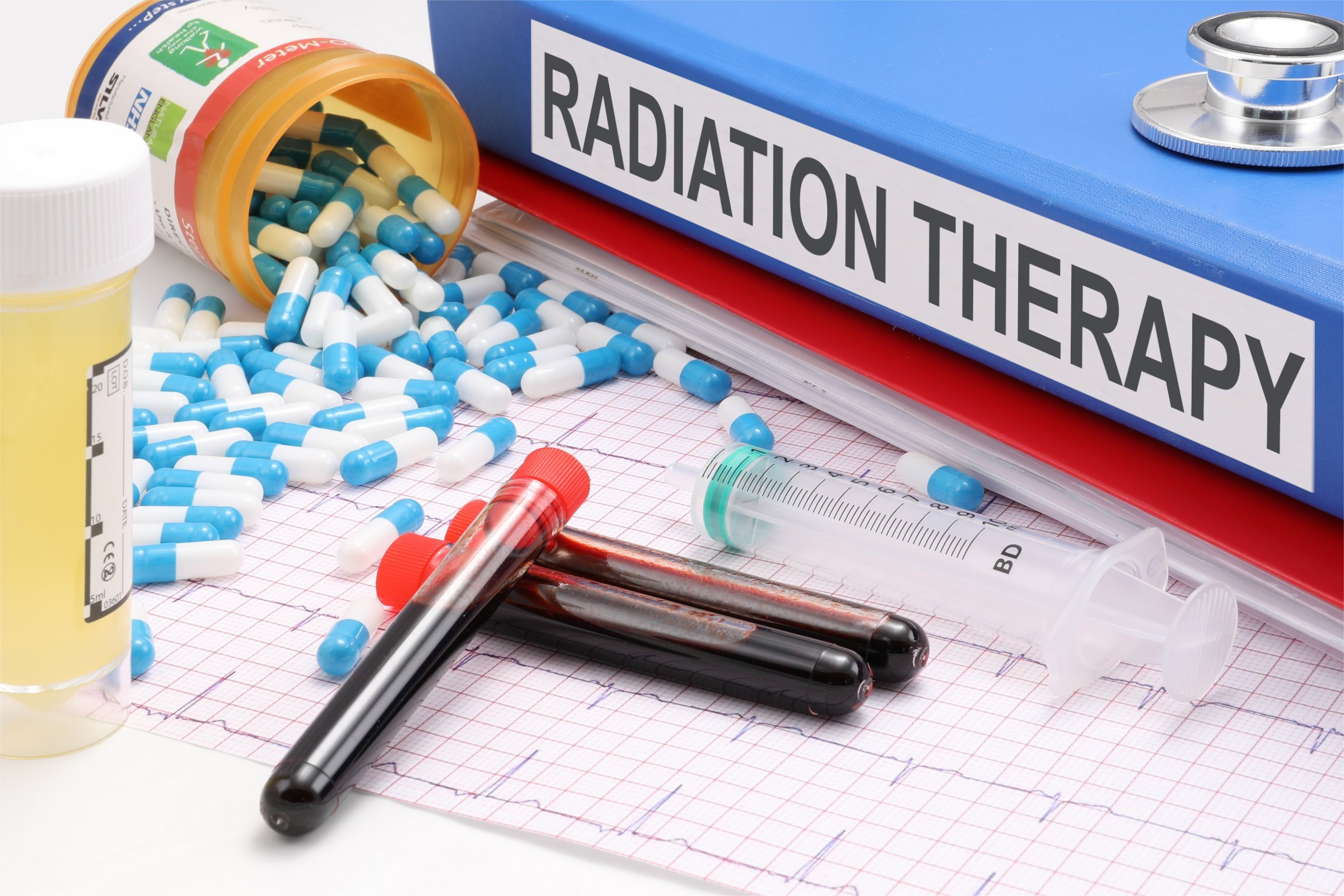Radiation Therapy for Cancer – Radiation therapy is a common treatment option for cancer patients. It involves the use of high-energy radiation to kill cancer cells and shrink tumors. This article provides an overview of radiation therapy, including the different types of radiation therapy, side effects, and other important considerations.
Table of Contents
- What is Radiation Therapy?
- How Does Radiation Therapy Work?
- Types of Radiation Therapy
- External Beam Radiation Therapy
- Internal Radiation Therapy
- Systemic Radiation Therapy
- Planning for Radiation Therapy
- Simulation
- Treatment Planning
- Side Effects of Radiation Therapy
- Acute Side Effects
- Late Side Effects
- Managing Side Effects
- Radiation Therapy for Specific Types of Cancer
- Breast Cancer
- Prostate Cancer
- Lung Cancer
- Head and Neck Cancer
- Conclusion
- FAQs
1. What is Radiation Therapy?
Radiation therapy is a type of cancer treatment that uses high-energy radiation to kill cancer cells. It can be used alone or in combination with other treatments, such as chemotherapy and surgery. Radiation therapy works by damaging the DNA in cancer cells, preventing them from dividing and growing.
2. How Does Radiation Therapy Work?
Radiation therapy works by damaging the DNA in cancer cells. The radiation causes breaks in the DNA strands, which prevent the cells from dividing and growing. Normal cells can also be affected by radiation, but they can usually repair themselves more effectively than cancer cells.
3. Types of Radiation Therapy
There are three main types of radiation therapy: external beam radiation therapy, internal radiation therapy, and systemic radiation therapy.
External Beam Radiation Therapy
External beam radiation therapy is the most common type of radiation therapy. It involves using a machine called a linear accelerator to deliver high-energy radiation to the area of the body where the cancer is located. The radiation is typically given in daily sessions over the course of several weeks.
Internal Radiation Therapy
Internal radiation therapy, also known as brachytherapy, involves placing radioactive sources inside the body near the cancer. The sources can be placed directly into the tumor or near the tumor. This allows for a higher dose of radiation to be delivered to the cancer while minimizing exposure to nearby healthy tissue.
Systemic Radiation Therapy
Systemic radiation therapy involves the use of radioactive substances that are taken orally or injected into the body. The radioactive substance travels through the bloodstream and accumulates in the cancer cells, delivering radiation directly to the tumor.
4. Planning for Radiation Therapy
Before starting radiation therapy, patients undergo a planning process to ensure that the radiation is delivered precisely to the area where the cancer is located. This planning process involves two main steps: simulation and treatment planning.
Simulation
Simulation involves using imaging techniques, such as CT scans or MRIs, to create a three-dimensional map of the area where the cancer is located. This map is used to determine the exact location and shape of the cancer.
Treatment Planning
Treatment planning involves using the simulation data to determine the appropriate dose of radiation and the best way to deliver it. This may involve creating custom-shaped blocks or using computer-controlled radiation beams to deliver the radiation.
5. Side Effects of Radiation Therapy
Radiation therapy can cause both acute and late side effects. Acute side effects typically occur during treatment and are usually temporary. Late side effects can occur months or even years after treatment and may be permanent.
Acute Side Effects
Acute side effects of radiation therapy can include fatigue, skin irritation, and nausea. These side effects are usually temporary and can be managed with medications or other treatments.
Late Side Effects
Late side effects of radiation therapy can include damage to healthy tissue near the treatment area, such as the lungs or heart. This can lead to long-term problems, such as difficulty breathing or heart disease. Late side effects can also include secondary cancers, although this is rare.
6. Managing Side Effects
There are several ways to manage the side effects of radiation therapy. Medications can be prescribed to help alleviate symptoms such as pain or nausea. Lifestyle changes, such as a healthy diet and exercise, can also help manage side effects.
7. Radiation Therapy for Specific Types of Cancer
Radiation therapy can be used to treat a wide variety of cancers. The type of radiation therapy used and the duration of treatment may vary depending on the type and stage of cancer.
Breast Cancer
Radiation therapy is often used after surgery for breast cancer to kill any remaining cancer cells and reduce the risk of the cancer coming back. Treatment typically lasts for several weeks.
Prostate Cancer
Radiation therapy can be used to treat prostate cancer in combination with other treatments or alone. Treatment can last for several weeks and may be used to shrink the tumor before surgery or to kill any remaining cancer cells after surgery.
Lung Cancer
Radiation therapy can be used to treat early-stage lung cancer or to relieve symptoms of advanced lung cancer. Treatment typically lasts for several weeks and may be used alone or in combination with chemotherapy.
Head and Neck Cancer
Radiation therapy can be used to treat head and neck cancer in combination with surgery or chemotherapy. Treatment typically lasts for several weeks and may cause side effects such as difficulty swallowing or dry mouth.
8. Conclusion
Radiation therapy is a common treatment option for cancer patients that uses high-energy radiation to kill cancer cells and shrink tumors. There are several types of radiation therapy, including external beam radiation therapy, internal radiation therapy, and systemic radiation therapy. Side effects of radiation therapy can include both acute and late effects, and managing these side effects is an important part of the treatment process. Radiation therapy can be used to treat a wide variety of cancers, and the type and duration of treatment may vary depending on the type and stage of cancer.
9. FAQs
- Is radiation therapy painful?
- Radiation therapy itself is painless, as the radiation is invisible and cannot be felt. However, some people may experience discomfort or pain if the radiation is directed towards a sensitive area of the body, such as the throat or skin. Additionally, radiation therapy can cause side effects such as fatigue, nausea, and skin irritation, which may be uncomfortable but can often be managed with medication or other treatments.
- Can radiation therapy cure cancer?
- Radiation therapy can be an effective treatment for some types of cancer. It works by using high-energy radiation to destroy cancer cells or prevent them from growing and spreading. Radiation therapy can be used alone or in combination with other treatments such as surgery or chemotherapy. While radiation therapy can help cure some types of cancer, its effectiveness depends on many factors, including the type and stage of cancer, the location of the tumor, and the individual’s overall health.
- How long does radiation therapy last?
- The length of radiation therapy treatment varies depending on the type and stage of cancer, as well as the treatment plan developed by the medical team. Radiation therapy can last from a few days to several weeks or even months. Treatments are typically scheduled daily, five days a week, over the course of several weeks. The radiation therapy team will work with the patient to develop a treatment plan that is appropriate for their specific needs.
- Will I lose my hair from radiation therapy?
- Hair loss is not a common side effect of radiation therapy unless the treatment is directed at the head or neck area. If the radiation is directed towards the scalp, hair loss in that area is possible. However, the amount of hair loss will depend on the dose and type of radiation used. Hair loss from radiation therapy is usually temporary and hair will typically regrow several months after treatment.
- Can radiation therapy cause long-term side effects?
- Radiation therapy can cause long-term side effects, depending on the type and dose of radiation used, the area of the body treated, and the individual’s overall health. Long-term side effects can include damage to surrounding tissues and organs, leading to problems such as fibrosis, scarring, and impaired function. Additionally, radiation therapy can increase the risk of developing other types of cancer later in life. However, many people who undergo radiation therapy do not experience significant long-term side effects.




